Moscow hoists Soviet flags at Svalbard
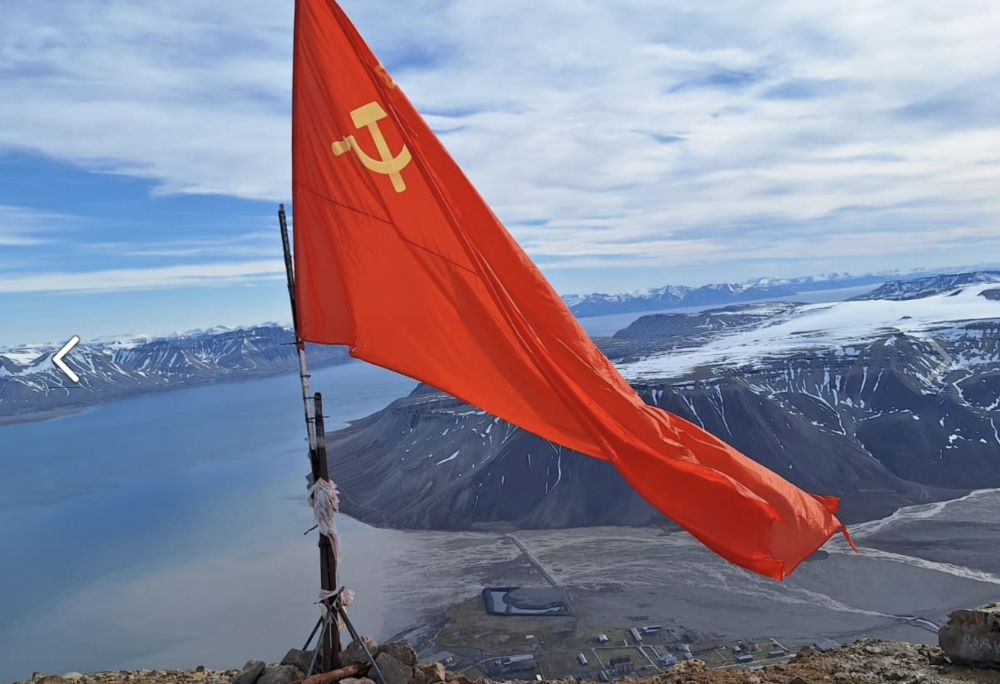
“The tradition has been revived and will live!” Russia’s state-owned company Arktikugol has over the last few weeks proudly hoisted Soviet flags in both Pyramiden and Barentsburg.
Russia continues to push its Soviet era politicized nostalgia at Svalbard. The Barents Observer has this week seen three large Soviet flags; one in Barentsburg and two in Pyramiden.
There could be more.
Also the Soviet-slogan Миру-мир! (Peace to the World!) made in wooden letters above both Pyramiden and Barentsburg have got a refresh. White painted in Pyramiden and red-colored above Barentsburg. The restoration happened in 2023.
It was last weekend General Director of Trust Arktikugol, Ildar Neverov, climbed the summit of Pyramiden and hoisted the flag of the Soviet Union.
The plain red flag with a gold hammer crossed with a sickle under a gold-bordered red star can been seen in binoculars from far distance when sailing Billefjorden, the northeast arm of Isfjorden at Svalbard.
Trust Arktikugol writes on Vkontakte that it took Ildar Neverov four hours to climb the mountain above Pyramiden to hoist the Soviet flag. He was accompanied by employees of the mining company and visiting tourists. The blog post adds two photos of an old painting from way back showing the same Soviet flag on the top.
“The tradition has been revived and will live!, Ildar Neverov makes clear in the post on Vkontakte.
Closer to Pyramiden, the coal-mining ghost town named after the mountain above, another Soviet flag becomes visible.
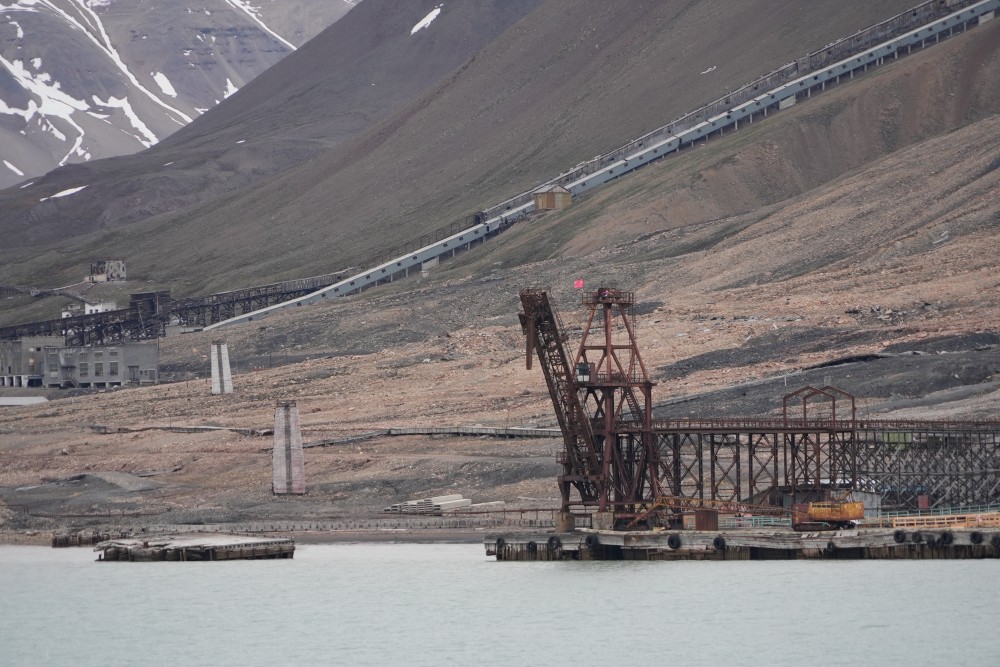
Since several years back, the coal-loading crane in the harbor at Pyramiden was decorated with two flags; the Norwegian and the Russian tricolor. Now, the Norwegian flag is removed and replaced with a much larger Soviet flag.
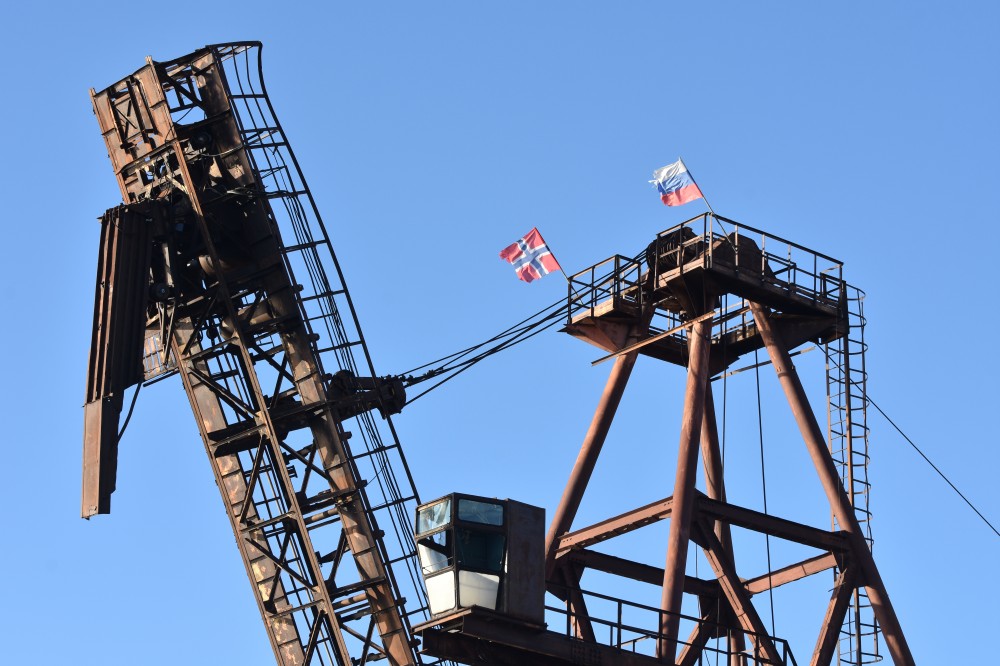
The Soviet Union bought Pyramiden in 1927 from the Swedes.
Although not stated publicly, Kremlin’s main idea with the settlement was not primarily to get coal. What could be taken out from beneath the permafrost inside the steep mountain was anyway just a tiny thousandth of the coal extracted in the Kuzbass region in southwestern Siberia.
Digging for coal gave the Soviet Union a foothold on Svalbard. The 1920 Svalbard Treaty recognizes the sovereignty of Norway over the archipelago, but all signatories were given equal rights to engage in commercial activities on the islands. In the 1920s, onshore, that meant coal mining.
Moscow ended coal mining in Pyramiden in 1998 and the workers hastely left. You can read more about the ghost town from Barents Observer’s visit a few years back.
Barentsburg
Return of the Soviet Union to Svalbard stands out in Barentsburg as well.
The Russian settlement where coal mining still happens this spring got a new Soviet flag in the port. Also this at top of the coal-loading crane.
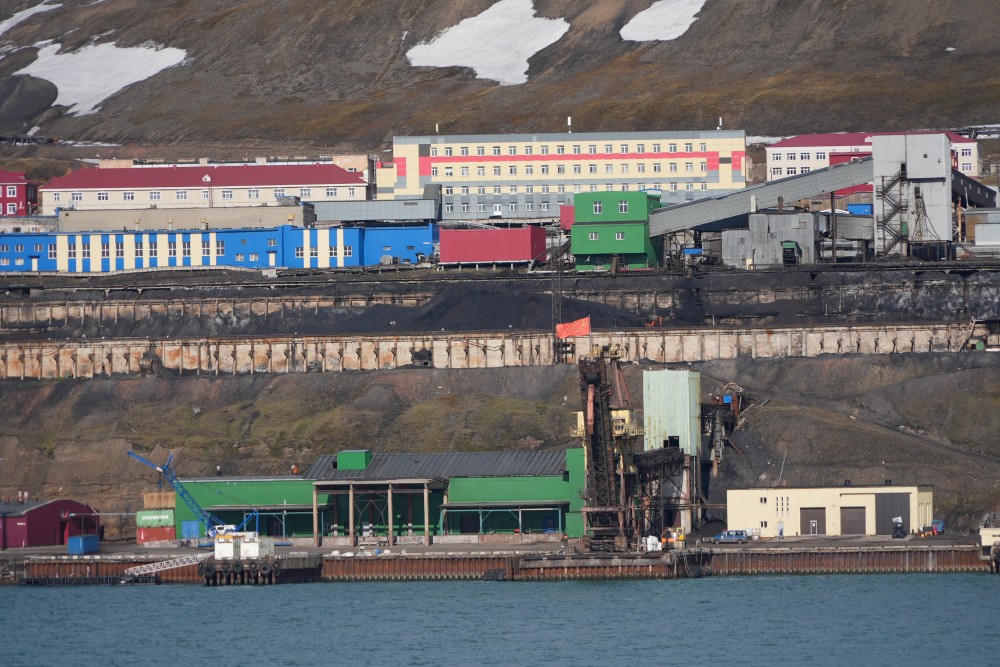
Latest news-update on the portal of Arktikugol includes a photo of the new Soviet flag.
Moscow’s use of the Soviet flags has a dual-purpose, says professor Kari Aga Myklebost with UiT – Arctic University of Norway.
“The application of Soviet symbols in Barentsburg and Pyramiden are framed as a key part of Arctikugol’s development of tourism, while at the same time it serves as a strategy to bolster Russian presence on Svalbard and evoke ideas of Soviet greatness and historical revanchism,” Myklebost says to the Barents Observer.
This is not the first time Arktikugol uses flags to stir controversies at Svalbard. Last year, state-owned company included a flag of the so-called Donetsk People’s Republic when staging its May 9th parade-ish event in Pyramiden.
Geopolitical ambitions
“The Kremlin mobilizes Soviet symbols and narratives as powerful identity building tools in their foreign and security policy, and the Soviet flag and state emblem are two of the foremost items used to underpin Soviet nostalgia in the Russian population and legitimize the Kremlin’s geopolitical ambitions abroad today,” Kari Aga Myklebost explains.
The Tromsø-based professor says the restoration of Soviet symbols in Pyramiden and Barentsburg should be seen in context of what happens in Ukraine.
“In Ukraine, most Soviet and communist symbols were outlawed by the parliament in 2015 in an attempt to protect the country from Russian neo-imperialism. Since February 2022, processes of de-communization have picked up speed in Ukraine, whereas the Kremlin continues to push Soviet symbols and its narrative of a just war.”
Myklebost says the Kremlin is actively using Arktikugol at Svalbard to push its foreign policy narratives.
“We should take into consideration that Svalbard is a strategically located Arctic outpost as seen from the Kremlin, and that Russia’s self-perception as a great power in world politics very much relies on its Arctic territories. Promoting Soviet symbols in the Arctic thus has a special flare to it, boosting ideas of Russian greatness.”
Hammer and sickle
Shortly after the slogan “Peace to the world” in Pyramiden’s mountainside was re-painted last summer, a giant version of the USSR state emblem appeared close by. According to Telegram channel Novosti Spitsbergena, this is a historical artefact which was restored on the initiative of Arktikugol employees.
The hammer and sickle emblem measures approximately seven meters in diameter.
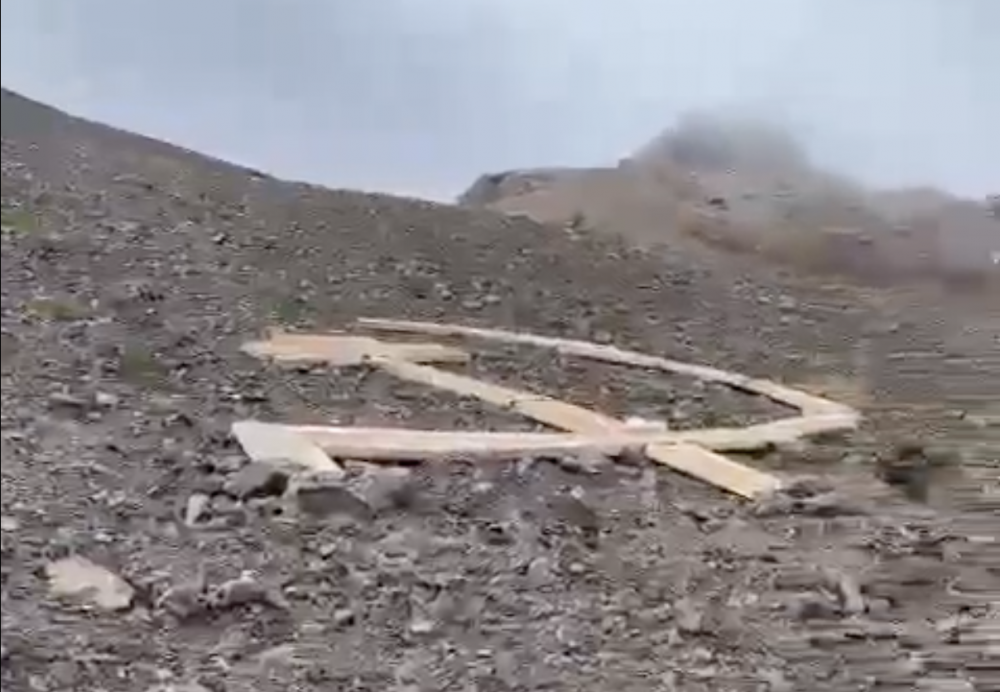
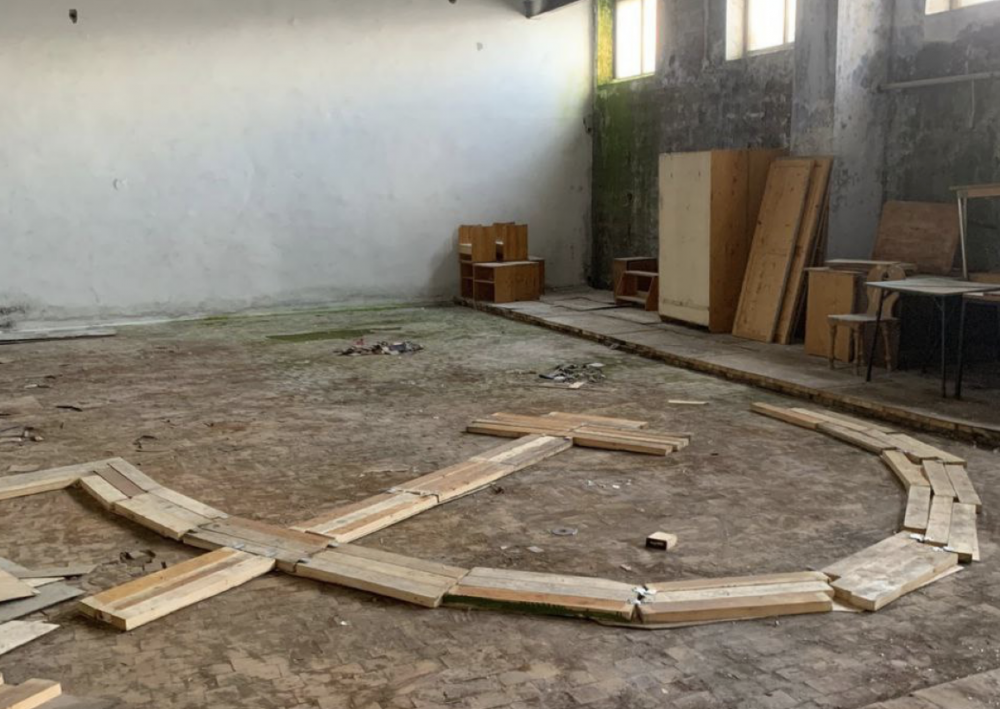
Timely coincidence or not, the hammer and sickle placement in Pyramiden happened at the same time last summer as authorities in the Ukrainian capital Kyiv debated the fate of the hammer and sickle emblem on the Mother Ukraine statue overlooking the city.
Eventually, the Soviet era symbol was replaced with the tryzub, the state emblem trident of Ukraine.
Longyearbyen hides Lenin
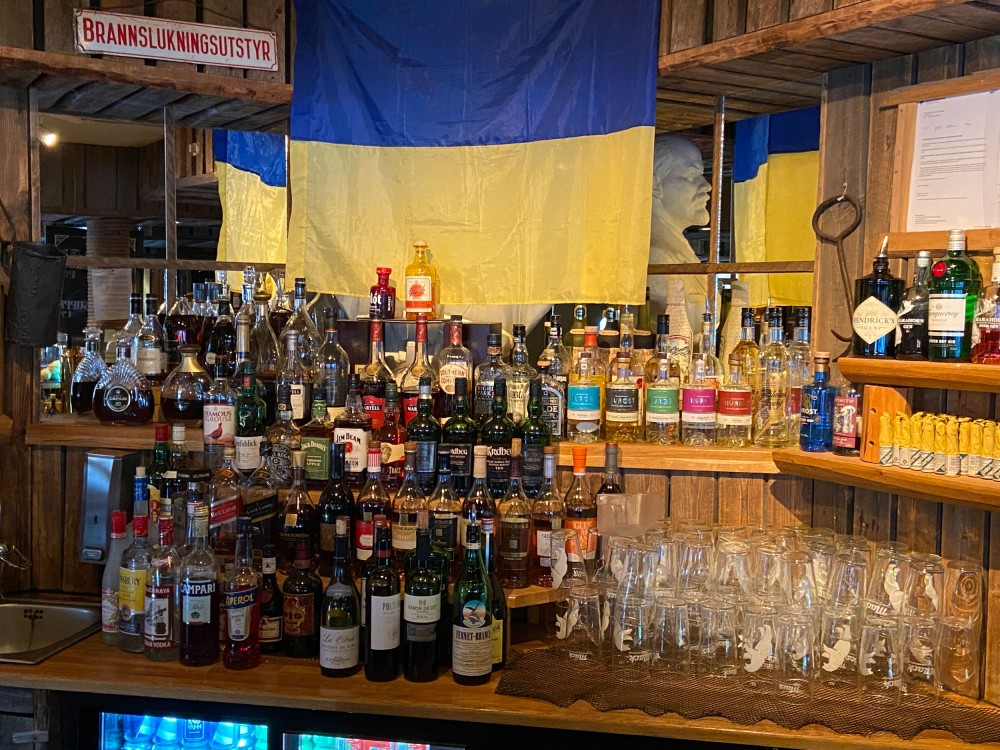
Located in Kirkenes, Norway, just a few kilometres from the borders to Russia and Finland, the Barents Observer is dedicated to cross-border journalism in Scandinavia, Russia and the wider Arctic.
As a non-profit stock company that is fully owned by its reporters, its editorial decisions are free of regional, national or private-sector influence. It has been a partner to ABJ and its predecessors since 2016.